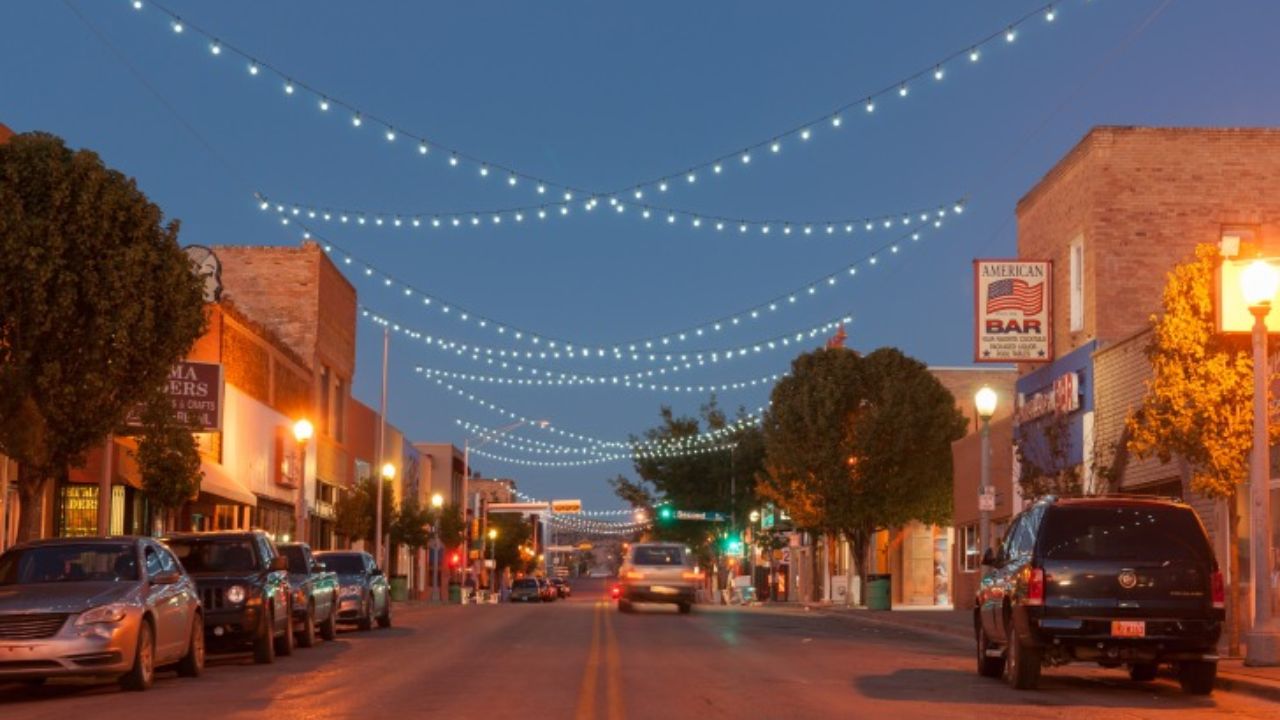In the heart of New Mexico lies Gallup, a town that has recently gained notoriety for being ranked as the second most dangerous city in the state. With a population of 21,935, Gallup has seen a surge in property crime, ranking highest in this category and second highest in violent crime. This shift in safety rankings has significantly impacted Gallup’s reputation, marking it as one of the state’s worst places to live.
What is the Current Crime Rate in Gallup
The current crime rate in Gallup, New Mexico, is 173% higher than the national average, with a daily average of 3.7 crimes per day – 0.9 violent crimes and 2.79 property crimes. The violent crime rate in Gallup is 1555 per 100,000 people, while the property crime rate stands at 4800 incidents per 100,000 people. These figures position Gallup among the most dangerous cities in America, emphasizing the city’s challenges in combating crime and enhancing community safety.
What is the Crime Rate Trend in Gallup Over the Past Decade
The crime rate trend in Gallup over the past decade has shown fluctuations, with some notable changes highlighted in the provided sources:
Violent Crime Rates: Over the past decade, Gallup has experienced variations in violent crime rates. While there has been a decrease in violent crime by 13.4% year-over-year, the city still faces challenges in combating violent offenses, with a violent crime rate of 1555 per 100,000 people.
Property Crime Rates: Gallup has seen a surge in property crime rates, positioning it among the worst 10% of American cities reporting crime. The city reports 4800 property crime incidents per 100,000 people, translating to a 1 in 21 chance of falling victim to property crime, significantly surpassing the national average
Vehicle Theft Trends: Vehicle thefts have been on the rise in Gallup, with the city ranking among those with the highest vehicle theft rates in the country. Last year alone, there were 151 vehicle thefts, amounting to 711 stolen vehicles per 100,000 residents, placing Gallup within the worst 10% of all cities in terms of vehicle theft rates
Public Perception: Public perceptions of crime in Gallup have also evolved over the years. While 28% of residents reported feeling very comfortable walking alone at night due to very little crime, 72% expressed concerns about the high crime levels in the city. These varying perceptions reflect the complex landscape of safety and security in Gallup.
In conclusion, the crime rate trend in Gallup over the past decade has been characterized by fluctuations in violent crime rates, a surge in property crime incidents, and challenges related to vehicle thefts. These trends underscore the ongoing efforts needed to address crime and enhance security measures in the city to create a safer environment for residents and visitors alike.
What Measures Are Being Taken to Reduce Crime in Gallup
Measures are being taken to reduce crime in Gallup, New Mexico, as highlighted in the provided sources:
Community Engagement: Efforts are being made to engage the community in addressing crime issues. By involving residents in crime prevention initiatives, creating neighborhood watch programs, and fostering a sense of shared responsibility for safety, Gallup aims to empower its residents to play an active role in reducing crime rates.
Law Enforcement Visibility and Responsiveness: Law enforcement agencies are working towards enhancing their visibility and responsiveness in Gallup. By ensuring that police are more visible in the community and improving response times to incidents, authorities aim to deter criminal activities and provide a swift and effective response to emergencies.
Crime Prevention Programs: Implementing crime prevention programs that target specific types of crimes, such as drug-related offenses, vandalism, identity theft, and other criminal activities, is a key strategy in reducing overall crime rates in Gallup. These programs focus on education, awareness, and intervention to address underlying issues contributing to criminal behavior.
Enhanced Security Measures: Gallup is exploring ways to enhance security measures in public spaces, parks, schools, and other areas prone to criminal activities. By implementing surveillance systems, increasing lighting in high-risk areas, and improving security protocols, the city aims to create a safer environment for its residents and visitors.
Collaboration with Nearby Cities: Collaboration with nearby cities and sharing best practices in crime prevention and law enforcement strategies can also contribute to reducing crime rates in Gallup. By working together with neighboring communities, Gallup can benefit from collective efforts aimed at improving safety and security across the region.
Overall, these measures reflect a multi-faceted approach involving community engagement, law enforcement initiatives, crime prevention programs, enhanced security measures, and collaboration with neighboring cities to address crime issues and create a safer environment for the residents of Gallup.
Conclusion
As Gallup grapples with its newfound status as one of New Mexico’s most dangerous cities, the community faces significant challenges in addressing crime rates and ensuring the safety of its residents. While the town’s historical significance and cultural richness remain integral to its identity, the pressing issue of safety demands immediate attention and concerted efforts to create a more secure environment for all. By staying informed, taking necessary precautions, and supporting initiatives to combat crime, Gallup can work towards fostering a safer and more resilient community for its residents and visitors alike.
In conclusion, Gallup’s recent safety report highlights the urgent need for proactive measures to address escalating crime rates and ensure the well-being of its inhabitants. As the town grapples with its new status as the second most dangerous city in New Mexico, a collective effort towards enhancing safety and security is crucial for the future of Gallup.

